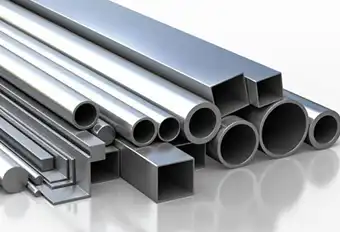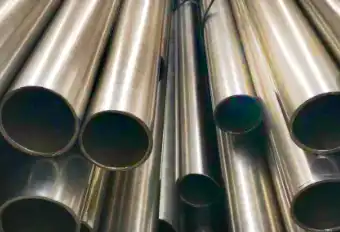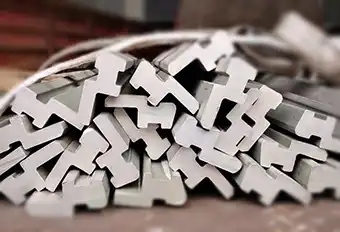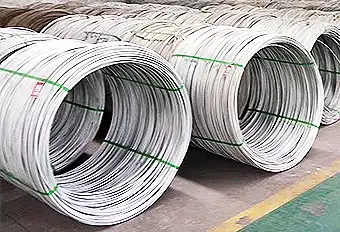Constraint Related Fatigue Crack Initiation Life of GH4169 Superalloy
Nickel-based GH4169 superalloy is used as turbine disc material in aeroengines because of its good oxidation resistance, good formability, weldability, and high strength. However, turbine disc fatigue failure will inevitably occur in onerous service environments and after a long operation time. To ensure the safety and reliability of aeroengines, the fatigue damage behavior and fatigue life of GH4169 superalloy need to be studied. Constraint is an important factor affecting the fatigue fracture behavior of materials, because changing it will impact the fatigue behavior. To achieve a long service life and high reliability of aeroengines, fatigue and constraint effects must be researched. However, there are only limited studies on the effect of constraint on fatigue crack initiation time. In this study, a crystal plasticity constitutive model based on low cycle fatigue rate correlation was applied to the GH4169 superalloy. Two fatigue indicators, namely the cumulated energy dissipation and cumulated plastic slip, were introduced as fatigue crack initiation criteria to study the fatigue crack initiation time for different micro-notch depths and lengths. In addition, the relationship between constraint and fatigue crack initiation life was further investigated using the unified constraint parameter Ap. The results showed that both cumulated energy dissipation and cumulated plastic slip can accurately predict the fatigue crack initiation time. With the increase in micro-notch depth, the fatigue crack initiation time decreased, while it increased with the increase in micro-notch length. A linear relationship between the fatigue crack initiation time and
under different micro-notch depths and lengths was observed. Based on this relationship, the constraint related to the fatigue crack initiation time can be determined.
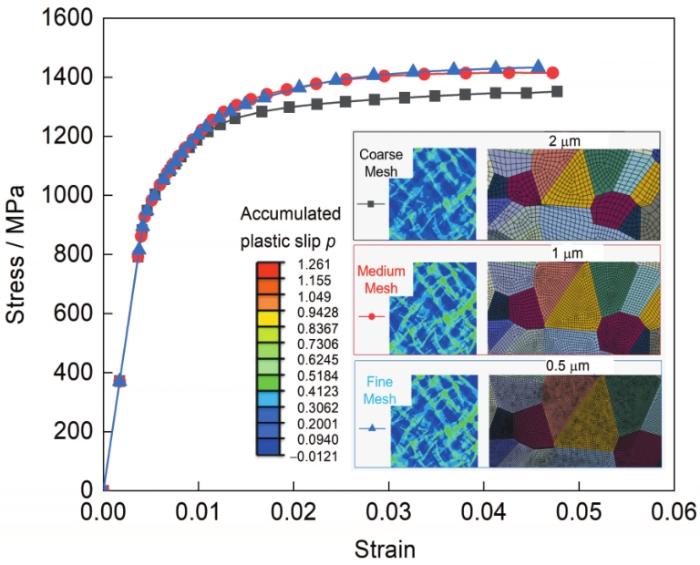
GH4169 nickel-based superalloy has the characteristics of good oxidation resistance, stable hot workability, excellent weldability and high strength, and is often used as a material for manufacturing turbine disks in the aerospace field [1,2]. However, under the harsh service environment and long-term work, fatigue failure accidents will inevitably occur in the turbine disk [3~6]. In order to ensure the safety and reliability of aero-engines, it is necessary to carry out in-depth research on the fatigue damage behavior and fatigue life of GH4169 alloy.
In terms of fatigue damage behavior, Shang et al. [7,8] studied the mechanical response and fatigue damage of GH4169 alloy under multiaxial loading, and pointed out that the fatigue life and cyclic hardening or softening characteristics depend not only on the loading path, but also on the Load order and load parameters. Sun et al[9,10] proposed a multiaxial fatigue damage parameter based on the critical plane method to calculate the pure fatigue damage at a constant high temperature, and used half of the maximum equivalent stress at cyclic stability as the creep stress to evaluate the multiaxial fatigue damage. Shaft creep fatigue damage. Prasad et al. [11] showed that the loading waveform had a significant effect on the damage degree and hysteresis loop shape of GH4169 under fatigue loading, and the strain aging phenomenon existed in GH4169 alloy at a lower strain rate. In terms of fatigue life, Walz and Riesch-Oppermann[12] established a stochastic model considering the quality and life of the turbine disk based on the fracture mechanics theory and the first-order reliability analysis method. Wei and Yang[13] developed a life prediction model based on fatigue damage parameters for GH4169 material, which can predict the low-cycle fatigue life under different strain amplitudes, and the prediction results are within the range of ± 2 times the error band. Ayyappan et al. [14] gave the remaining life prediction process, and obtained the probabilistic remaining life of the turbine disk through the statistical analysis of the ± 3σ (σ represents the standard deviation) stress-strain curve.
However, the above works are mainly carried out at the macro scale. With the deepening of the research, people found that only the research on the macro scale is not enough to fully understand the fatigue behavior, and the research work on the fatigue behavior on the micro scale has appeared one after another. In terms of experiments, Krupp[15] showed that the elastic modulus and hardening modulus of the second phase particles are quite different from those of the matrix, especially in the γ-phase strengthened GH4169 alloy. An et al. [16] studied the correlation between the microstructure evolution of the material and the low cycle fatigue life by aging the GH4169 alloy for different times. Studies have shown that when the aging time increases, the γ phase transforms into the δ phase, and the fatigue resistance of the material decreases significantly. Alexandre et al. [17] studied the effect of grain size on the crack initiation mechanism, and found that when the grain size is 5-10 μm, fatigue cracks are more likely to initiate in the second phase particles, and when the grain size is larger than 150 μm, it will pass through the transgranular method. Slip initiation. Huang et al. [18] also obtained the same research results. In terms of finite element numerical calculation, Hu et al. [19] studied the crack growth behavior of GH4169 alloy under creep fatigue load based on the crystal plastic finite element method, and confirmed that the grain refinement and the existence of δ phase at the grain boundary made the GH4169 alloy The number of weak interfaces increases rapidly at 650 °C, leading to the initiation and propagation of intergranular cracks. Guerchais et al. [20] analyzed the effect of defects on crack initiation under high cycle fatigue based on crystal plasticity finite element method. The research showed that the increase of defect size will lead to the increase of the ratio between torsional and tensile fatigue limits. Zhang et al.[21,22] studied the short crack growth phenomenon of nickel-based superalloys by using the method of extended finite element (XFEM) and crystal plasticity finite element, by using the independent shear strain on each slip system as the driving force successfully simulated the crack propagation path along the slip direction in a single-crystal fcc-structured nickel-based superalloy.
Among them, how to define the crack initiation criterion has become the focus of research in the study of microscopic fatigue crack initiation. Manonukul et al. [23] and Dunne et al. [24] used plastic slip as the criterion for crack initiation, and accurately predicted the fatigue crack initiation point, fatigue crack propagation path, and the location and direction of the plastic slip zone of polycrystalline nickel-based alloys. And it is highly consistent with the experimental results. Guo et al. [25,26] took energy dissipation as the threshold and developed a two-line method based on energy dissipation to assess fatigue limit. Yuan et al. [27] studied the low-cycle fatigue cyclic plastic behavior of GH4169 alloy based on the finite element method of crystal plasticity. The results showed that both cumulative plastic slip and cumulative energy dissipation can be used as the criterion for fatigue crack initiation.
Confinement is an important factor affecting the fatigue behavior of materials no matter at the macro or micro scale. Restraint can be regarded as the obstruction of the structure to the plastic deformation of the material in the crack tip area, which is closely related to the triaxial stress state. Factors affecting restraint include aspects such as crack size, specimen or structure geometry, and material property mismatch. The restraint effect caused by crack size and sample or structure geometry is usually called geometric restraint, and the restraint effect caused by material property mismatch is called material restraint. Changes in restraint cause changes in fatigue crack growth behavior. In the existing standards, the fatigue crack growth rate is often measured in the laboratory using standard specimens, but at the same stress level, the actual working conditions of the engineering structure are often inconsistent with the laboratory conditions. At the same time, different restrained specimens and There will also be differences in the crack growth rate of the structure. Some scholars have observed that high restraint will reduce the fatigue crack growth rate [28~30], and some scholars have observed the opposite phenomenon [31]. Some scholars have found that the restraint effect has an influence on the fatigue crack growth rate in the Paris region and the near-threshold region [29,32], and some studies [30] have shown that the restraint effect only exists in the near-threshold region. Yang et al. [33] showed in a recent study that the effect of restraint on the fatigue crack growth rate is related to the loading method. When using a faster fatigue crack growth rate to evaluate the integrity of a structure with a slower fatigue crack growth rate, it will produce an overly conservative evaluation result, which will lead to unnecessary maintenance or scrapping, resulting in greater economic losses; on the contrary, when using It may give non-conservative results when assessing the integrity of structures with faster fatigue crack growth rates, thus creating a hazard.
In order to accurately understand the fatigue behavior of materials, it is necessary to consider both fatigue and restraint effects in the research, but there is still a lack of research on the influence of restraint effects on the fatigue crack initiation life of GH4169 alloy. In view of this, this work is based on the crystal plasticity finite element method, and two fatigue indicator factors, cumulative plastic slip and cumulative energy dissipation, are respectively selected as the fatigue crack initiation criteria. The fatigue crack initiation life of GH4169 alloy was studied. And based on the unified restraint parameter Ap, the restraint effect in fatigue crack initiation was further explored to establish the relationship between restraint and fatigue crack initiation life.


